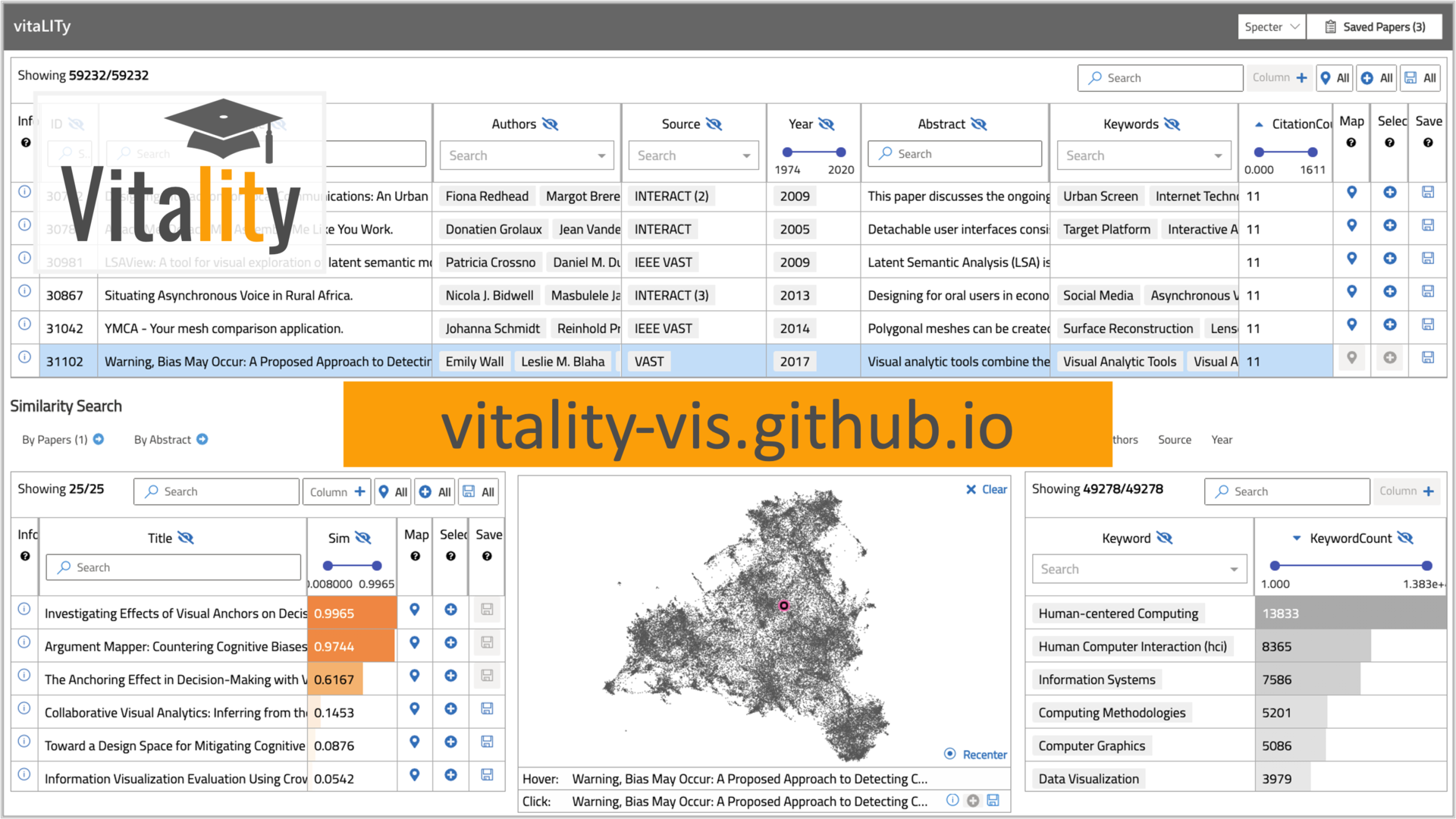VitaLITy: Promoting Serendipitous Discovery of Academic Literature with Transformers & Visual Analytics
Arpit Narechania, Alireza Karduni, Ryan Wesslen, Emily Wall
External link (DOI)
View presentation:2021-10-27T15:15:00ZGMT-0600Change your timezone on the schedule page
2021-10-27T15:15:00Z

Fast forward
Direct link to video on YouTube: https://youtu.be/n_VReTG1GgE
Abstract
There are a few prominent practices for conducting reviews of academic literature, including searching for specific keywords on Google Scholar or checking citations from some initial seed paper(s). These approaches serve a critical purpose for academic literature reviews, yet there remain challenges in identifying relevant literature when similar work may utilize different terminology (e.g., mixed-initiative visual analytics papers may not use the same terminology as papers on model-steering, yet the two topics are relevant to one another). In this paper, we introduce a system, VITALITY, intended to complement existing practices. In particular, VITALITY promotes serendipitous discovery of relevant literature using transformer language models, allowing users to find semantically similar papers in a word embedding space given (1) a list of input paper(s) or (2) a working abstract. VITALITY visualizes this document-level embedding space in an interactive 2-D scatterplot using dimension reduction. VITALITY also summarizes meta information about the document corpus or search query, including keywords and co authors, and allows users to save and export papers for use in a literature review. We present qualitative findings from an evaluation of VITALITY, suggesting it can be a promising complementary technique for conducting academic literature reviews. Furthermore, we contribute data from 38 popular data visualization publication venues in VITALITY, and we provide scrapers for the open-source community to continue to grow the list of supported venues.